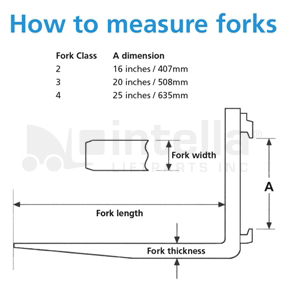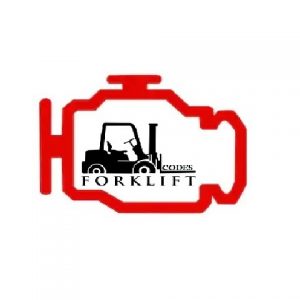Lift truck forks are designed and built to be very robust and durable. But without the proper inspections, maintenance and adjustments, they can be damaged or worn out relatively quickly. Below are some very basic items to consider when inspecting lift truck forks. As always, please Grab the Moment and do a proper Task Hazard Analysis, wear proper PPE and take the required steps to ensure you work safely:
- Verify lift chains are properly adjusted and fork heels are not touching the floor on level area with forks lowered and mast vertical
- Clearance under fork heels in above condition should be 12mm (+3/-6) or
.47in (+.12/-.24) - Inspect fork lock pin assembly for wear, damage or missing parts
- Inspect fork shank and blade for cracks or damage
- Inspect hook and tube welds for cracks
- Inspect for tip alignment to be within 3% of fork length
- Inspect blade for wear preferably using a digital caliper or fork inspection tool, wear must not exceed 10% compared to shank
- Inspect fork angle preferably with a protractor or fork inspection tool, angle must be between 87 – 93 degrees
- Inspect upper hook for wear with wear template tool
- Inspect upper hook inner weld for wear with inspection template, must have 1/32″ gap minimum
- Inspect tube and pin on pin type forks for a maximum 3% wear with a digital caliper
The majority of fork replacement is due to improper adjustment of lift chains and poor maintenance. It is up to us to be good stewards of our customer’s resources and help them get the most out of their investment in our products and services.

